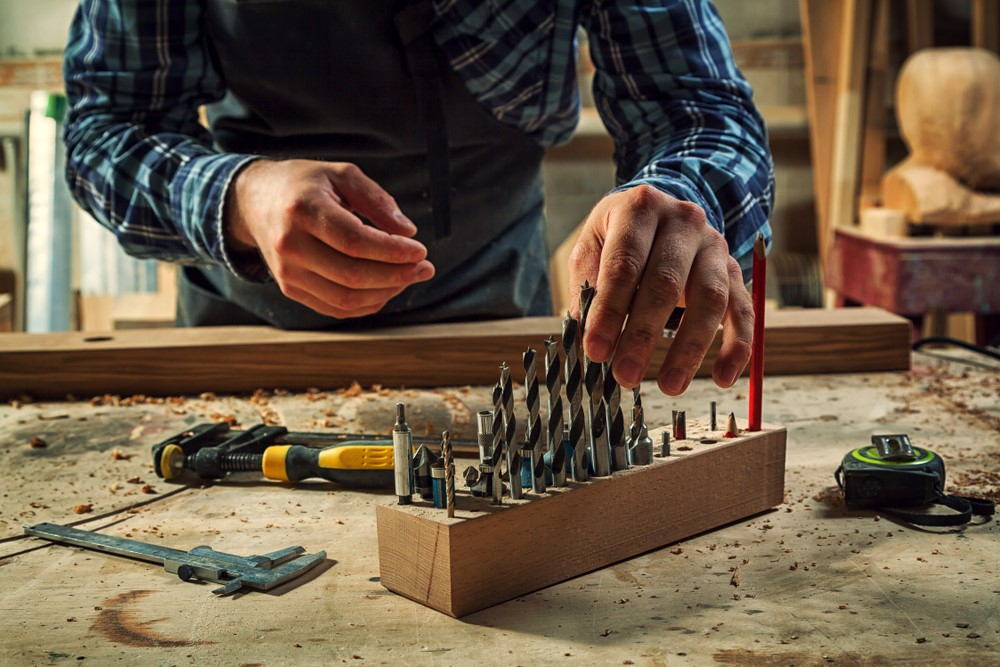Importance of sharp drill bits: Sharp drill bits are essential for efficient and effective drilling. They can easily cut through materials and produce clean, precise holes. When drill bits become dull, they can cause problems such as slipping, tearing, and uneven holes. This can result in a longer drilling time, lower quality results, and potentially even damage to the drill bit or material being drilled.
Benefits of sharp drill bits: Sharp drill bits have several benefits, including smoother drilling, less heat generation, and a longer lifespan. Smoother drilling is achieved because the sharp cutting edge of the drill bit is able to slice through the material with less resistance, resulting in less strain on the drill and less wear and tear on the drill bit.
This also leads to less heat generation, as less energy is required to drill through the material. In addition, sharp drill bits have a longer lifespan because they are subjected to less stress and wear, so they are less likely to break or become damaged.
Materials Needed
-
- Drill bit sharpener: A drill bit sharpener is a tool that is specifically designed for sharpening drill bits. It typically consists of a grinding or honing wheel and a chuck that holds the drill bit in place. There are several different types of drill bit sharpeners available, including electric and manual versions, as well as portable and bench-mounted models.
- Grinding stone or honing stone: A grinding stone or honing stone is a type of abrasive material that is used to sharpen the cutting edge of a drill bit. Grinding stones are typically coarser and more aggressive, while honing stones are finer and more precise. The type of stone you choose will depend on the type of drill bit and the desired level of sharpness.
- Water or oil for lubrication: Lubrication is important when sharpening a drill bit to prevent the grinding or honing wheel from overheating and damaging the drill bit. Water or oil can be used as a lubricant, and the choice will depend on the type of stone being used. Water is typically used with grinding stones, while oil is used with honing stones.
- Protective eyewear: It is important to wear protective eyewear when sharpening a drill bit to protect your eyes from flying debris and sparks.
Preparation
-
- Inspect the drill bit for any damage or wear: Before sharpening a drill bit, it is important to inspect it for any damage or wear. If the drill bit is severely worn or damaged, it may not be possible to sharpen it effectively. In this case, it may be necessary to replace the drill bit.
- Determine the type of drill bit: The type of drill bit you are working with will determine the appropriate sharpening method. There are several different types of drill bits, including high-speed steel, carbide, and cobalt. Each type of drill bit has its own unique properties and requires a specific sharpening method.
- Choose the appropriate sharpening method based on the type of drill bit: Once you have determined the type of drill bit you are working with, you can select the appropriate sharpening method. High-speed steel drill bits can be sharpened using a grinding stone or a honing stone, while carbide and cobalt drill bits require a diamond sharpening stone or a carbide sharpening tool.
Sharpening methods
Sharpening methods for drill bits depend on the type of drill bit and the desired level of sharpness. Here are some common methods for sharpening different types of drill bits:
High-speed steel drill bits
High-speed steel (HSS) drill bits are the most common type of drill bit and are suitable for drilling into a wide range of materials. They can be sharpened using a grinding stone or a honing stone.
To sharpen an HSS drill bit using a grinding stone
- Secure the drill bit in a drill bit sharpener or a bench vise.
- Select a grinding stone that is suitable for the type of material you will be drilling into. Grinding stones come in different grits, with lower grit numbers indicating a coarser stone.
- Apply water or oil to the grinding stone and the drill bit as a lubricant.
- Begin sharpening the drill bit by holding the stone at a slight angle to the cutting edge of the drill bit.
- Move the stone along the cutting edge in a back and forth motion, applying moderate pressure.
- Rotate the drill bit and repeat the process until the entire cutting edge has been sharpened.
- Test the sharpness of the drill bit by trying to cut through a piece of paper or cardboard. If the drill bit is still dull, repeat the process until it is sharp.
To sharpen an HSS drill bit using a honing stone
- Secure the drill bit in a drill bit sharpener or a bench vise.
- Select a honing stone that is suitable for the type of material you will be drilling into. Honing stones come in different grits, with higher grit numbers indicating a finer stone.
- Apply oil to the honing stone and the drill bit as a lubricant.
- Begin sharpening the drill bit by holding the stone at a slight angle to the cutting edge of the drill bit.
- Move the stone along the cutting edge in a back and forth motion, applying moderate pressure.
- Rotate the drill bit and repeat the process until the entire cutting edge has been sharpened.
- Test the sharpness of the drill bit by trying to cut through a piece of paper or cardboard. If the drill bit is still dull, repeat the process until it is sharp.
Carbide and cobalt drill bits
Carbide and cobalt drill bits are made of extremely hard materials and are suitable for drilling into extremely hard materials such as concrete, ceramic, and glass. They require a special sharpening method, such as using a diamond sharpening stone or a carbide sharpening tool.
To sharpen a carbide or cobalt drill bit using a diamond sharpening stone:
- Secure the drill bit in a drill bit sharpener or a bench vise.
- Select a diamond sharpening stone that is suitable for the type of material you will be drilling into. Diamond sharpening stones come in different grits, with higher grit numbers indicating a finer stone.
- Apply water or oil to the diamond sharpening stone and the drill bit as a lubricant.
- Begin sharpening the drill bit by holding the stone at a slight angle to the cutting edge of the drill bit.
- Move the stone along the cutting edge in a back and forth motion, applying moderate pressure.
- Rotate the drill bit and repeat the process until the entire cutting edge has been sharpened.
- Test the sharpness of the drill bit by trying to cut through a piece of paper or cardboard. If the drill bit is still dull, repeat the process until it is sharp.
Final Takeaway
Sharpening drill bits is an important maintenance task that can help extend the lifespan of your drill bits and improve their performance. The process involves using a suitable sharpening tool, such as a grinding stone or a honing stone, and applying it to the cutting edge of the drill bit. The type of sharpening tool and method used will depend on the type of drill bit and the desired level of sharpness. Properly sharpened drill bits can make drilling easier, faster, and more accurate, so it is worth taking the time to learn how to sharpen them properly.

